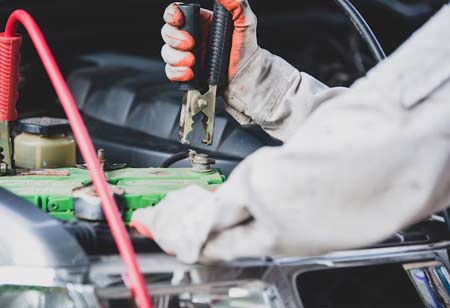Thank you for Subscribing to Electrical Business Review Weekly Brief
I agree We use cookies on this website to enhance your user experience. By clicking any link on this page you are giving your consent for us to set cookies. More info
Unlocking the Secrets of Automotive Electrical Systems
The process of selecting test tools is complex, regardless of the technician's level of expertise. Today's testers are frequently so complex that even skilled salespeople and tool specialists only need help understanding some of the features and advantages of a particular tool or equipment.

By
Electrical Business Review | Tuesday, September 02, 2025
Stay ahead of the industry with exclusive feature stories on the top companies, expert insights and the latest news delivered straight to your inbox. Subscribe today.
Fremont, CA: The complexity of tools and equipment used in cars, vehicles, and systems necessitates professional technicians not only to understand and interpret readings from advanced electrical test equipment.
Certain generic electrical test equipment classes allow for a more reasonable number of tools. Diagnostic testers, specialist testers, and generic system testers are all available. These three primary categories provide a solid foundation for considering the instruments and apparatus required to assess the electrical systems of contemporary automobiles.
Generic or general testers are typically made to function on several vehicles and systems or conduct various tests. These testers could include voltage test lamps, multimeters, and battery load testers. The primary advantage of these tools is their ability to operate on various vehicles and conduct general checks on multiple systems.
Electrical testing instruments and equipment is the largest category. These tools lay the groundwork for all further; more intricate testing that might be required. Here is a good place for a technician to begin expanding their toolkit. Even the most complex vehicles still need the fundamentals. The essentials should include a 12-volt test light and a multimeter that can detect volts, amps, AC and DC, diode testing, rpm, temperature, and starting draw, among other tests.
In addition to storing minimum and maximum values on data, the meter should feature overload protection using fuses. Today, many tests require meters with a graphical representation. A tech should then consider a group of accessories to help enhance the multimeter. These could include an amp clamp adaptor (which enables starter draw testing), a K-style temperature probe, and a rpm inductive pickup. After things are set up, ensure that the kit has a variety of clamps, back probes, test leads, and extensions. These things guarantee that the technician can connect the tested item to their test apparatus.
Another highly potent tool is a power injector. This equipment allows the technician to power a component for testing. A ground wire is typically located close to the power source in these systems. Power injectors are some of the most effective productivity tools available to technicians today. These instruments offer a polarity indicator, lighting, and loud alerts.








